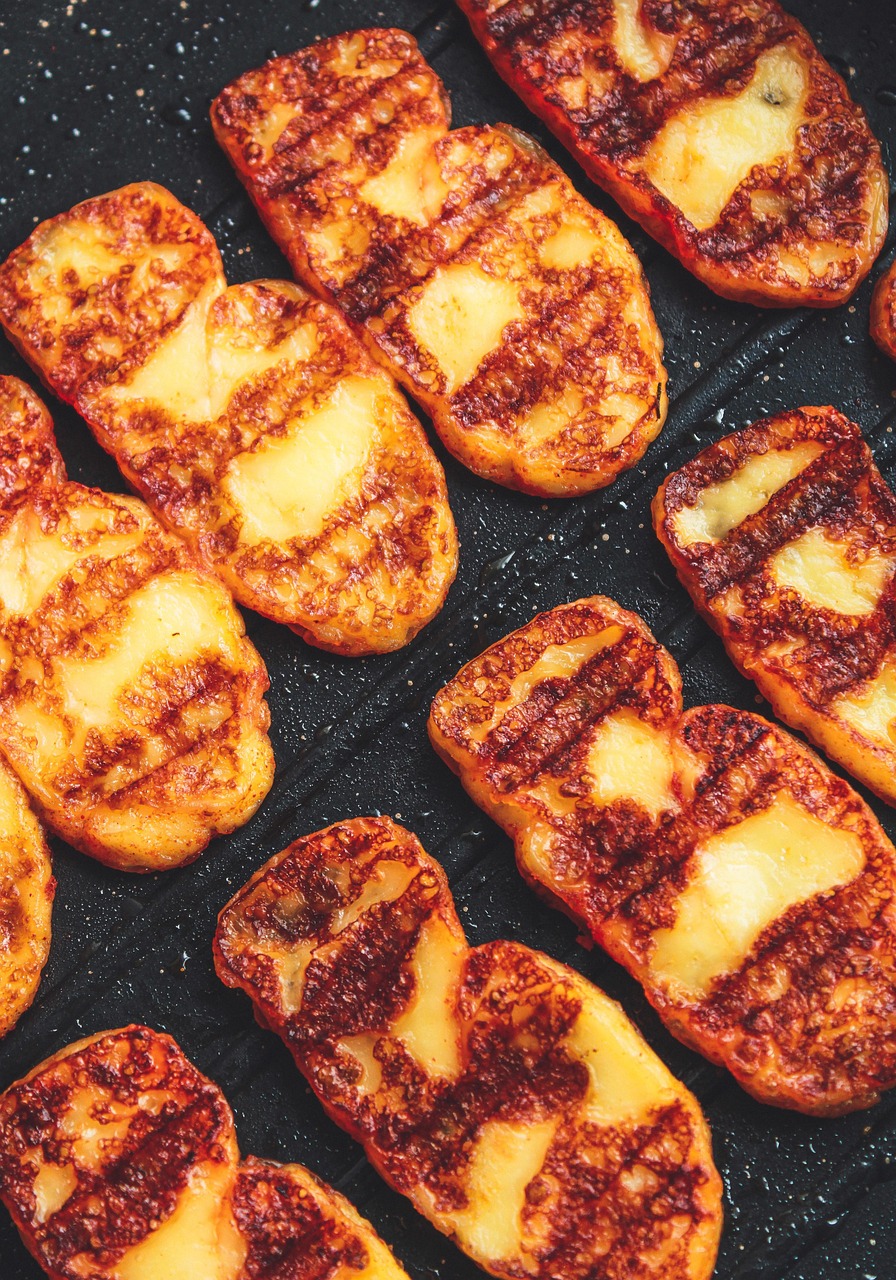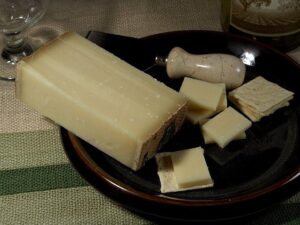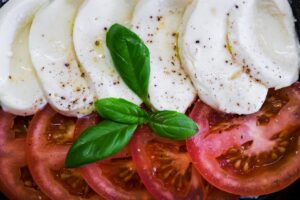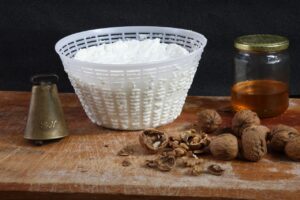Halloumi cheese, known for its distinct squeaky texture and high melting point, has earned a special place in global kitchens. Whether grilled, fried, or added to salads, Halloumi delivers a unique culinary experience. But there’s more to this cheese than just its taste—Halloumi has centuries of tradition, regional pride, and complex production techniques.
In this blog, we dive into the history, origin, production methods, regions, and varieties of Halloumi, making it the perfect resource for food lovers, cheese connoisseurs, and culinary students.
What Is Halloumi Cheese?
Halloumi is a semi-hard, brined cheese traditionally made from a blend of goat’s and sheep’s milk. Today, cow’s milk is also commonly used, especially in commercial production.
Its most defining characteristic is its ability to retain shape when cooked, making it ideal for grilling and frying. Halloumi has a salty, tangy flavor and a rubbery texture that squeaks against the teeth when bitten into—a quality many fans adore.
Halloumi-Producing Regions
1. Cyprus (PDO Region)
The authentic Halloumi comes from Cyprus.
Made primarily with goat’s and sheep’s milk, with cow’s milk allowed in limited quantities.
Often folded into a half-moon shape, sometimes with mint leaves added between folds to enhance freshness and flavor.
2. Middle Eastern Countries
Countries like Lebanon, Egypt, and Syria produce Halloumi-style cheese.
These versions often use cow’s milk and may not follow traditional methods.

3. United Kingdom and Australia
Due to high demand, Halloumi is also made in places like the UK and Australia.
These versions typically use pasteurized cow’s milk and may differ in texture and taste.
While tasty, they cannot be labeled as “Halloumi” in the EU unless made in Cyprus.
Traditional Production Methods
Making Halloumi involves several precise steps that give it its unique character:
1. Milk Selection
Traditional Halloumi uses raw goat’s and sheep’s milk.
In industrial production, pasteurized cow’s milk is commonly used, sometimes blended with sheep or goat milk for authenticity.
2. Curdling the Milk
Milk is heated and coagulated with rennet to form curds.
The curds are then cut, drained, and pressed.
3. Cooking the Curd
The pressed curds are reheated in whey until they float to the top.
This step is key to achieving Halloumi’s high melting point.
4. Folding and Salting
Once removed from the whey, the curds are salted and often folded.
In Cyprus, a fresh mint leaf is placed between folds for added flavor and preservation.
5. Brining
The cheese is soaked in a salty brine, which preserves it and enhances its flavor.
It can be eaten fresh or aged for several months, developing a firmer texture and saltier taste.
Varieties of Halloumi Cheese
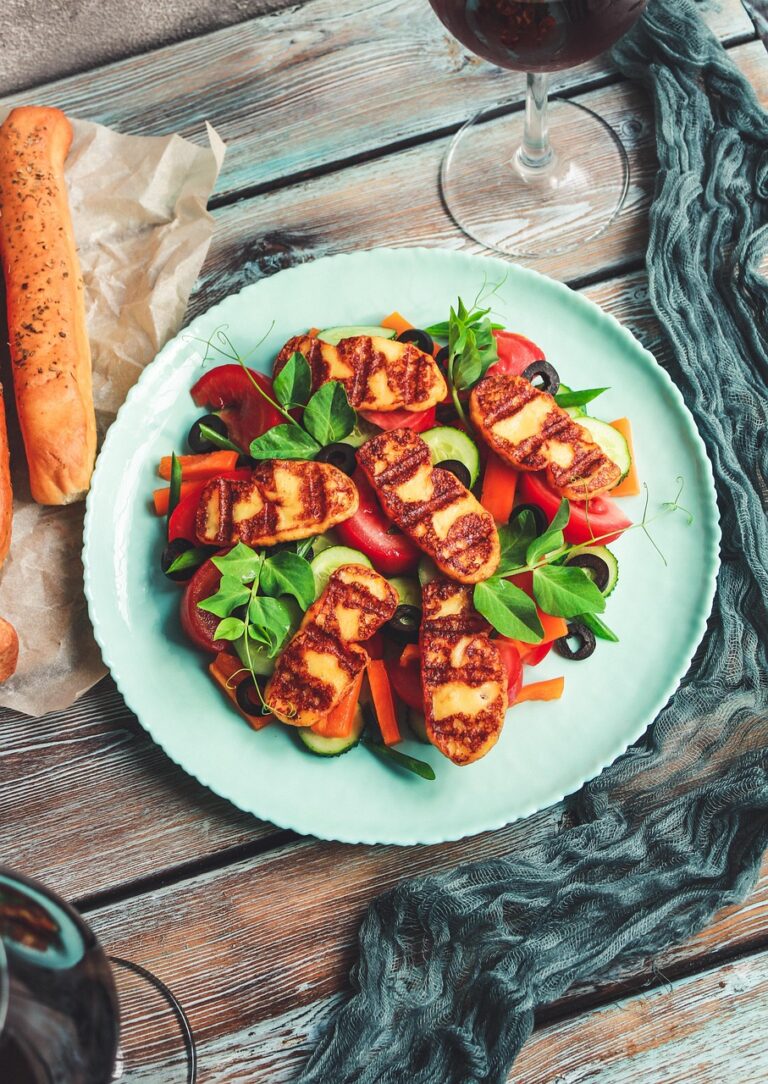
While the traditional recipe remains the gold standard, several variations have emerged over the years:
1. Fresh Halloumi
Soft, moist, and less salty.
Ideal for slicing and grilling or frying.
Often consumed within a few weeks of production.
2. Aged Halloumi
Firmer texture and stronger flavor.
Often grated over pasta or salads, similar to Parmesan.
Saltier due to longer brining period.
3. Flavored Halloumi
Infused with herbs like mint, oregano, chili, or garlic.
Adds complexity and variety to the flavor profile.
4. Low-Salt Halloumi
For health-conscious consumers.
Contains less sodium but may sacrifice some of the traditional flavor.
Halloumi in Modern Cuisine
Halloumi has seen a surge in global popularity over the past decade. It’s featured in:
Vegetarian and vegan dishes (as a meat alternative).
Middle Eastern and Mediterranean recipes.
Salads, burgers, and skewers.
Street food and gourmet restaurants alike.
Its firm texture and umami-rich profile make it incredibly versatile—one of the few cheeses that performs as well on a grill as it does on a cheeseboard.
Health Benefits and Nutritional Value
While Halloumi is high in protein and calcium, it also contains significant amounts of salt and saturated fat. Here’s a quick breakdown per 100g:
Calories: ~320 kcal
Protein: ~20g
Fat: ~26g (of which saturated ~18g)
Sodium: ~2g
It’s best enjoyed in moderation, especially for people watching their salt intake.
Halloumi and Sustainability
There is growing concern about animal welfare and sustainable dairy practices. In Cyprus, efforts are being made to:
Support local shepherds.
Maintain traditional, small-scale dairy production.
Protect the natural ecosystem of the Troodos Mountains, where many goats and sheep graze.
Consumers are increasingly seeking PDO-Certified Halloumi, which supports the island’s economy and cultural heritage.
How to Cook Halloumi Cheese
Grilled Halloumi:
Slice into 1 cm slabs.
Grill on medium-high heat for 2–3 minutes each side.
Serve with watermelon, mint, or roasted vegetables.
Pan-Fried Halloumi:
Add a splash of olive oil to a pan.
Fry slices until golden brown.
Pair with lemon juice or honey for contrast.
Baked Halloumi:
Cube and bake at 200°C (390°F) for 15 minutes.
Toss into grain bowls or pasta dishes.
Raw Halloumi:
Less common but sometimes enjoyed fresh in Cyprus.
More likely with young, soft Halloumi straight from local dairies.
Halloumi is far more than just a trendy cheese—it’s a culinary ambassador of Cyprus, rooted in ancient traditions and evolving through global demand. From its traditional production methods to its diverse modern applications, Halloumi offers a world of flavor in every bite.
Whether you’re enjoying it grilled in a sandwich, fried as an appetizer, or crumbled over a salad, Halloumi is a cheese with personality, history, and purpose.
For the best experience, seek out PDO-labeled Halloumi and support authentic Cypriot producers. Your tastebuds—and conscience—will thank you.

